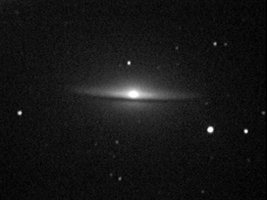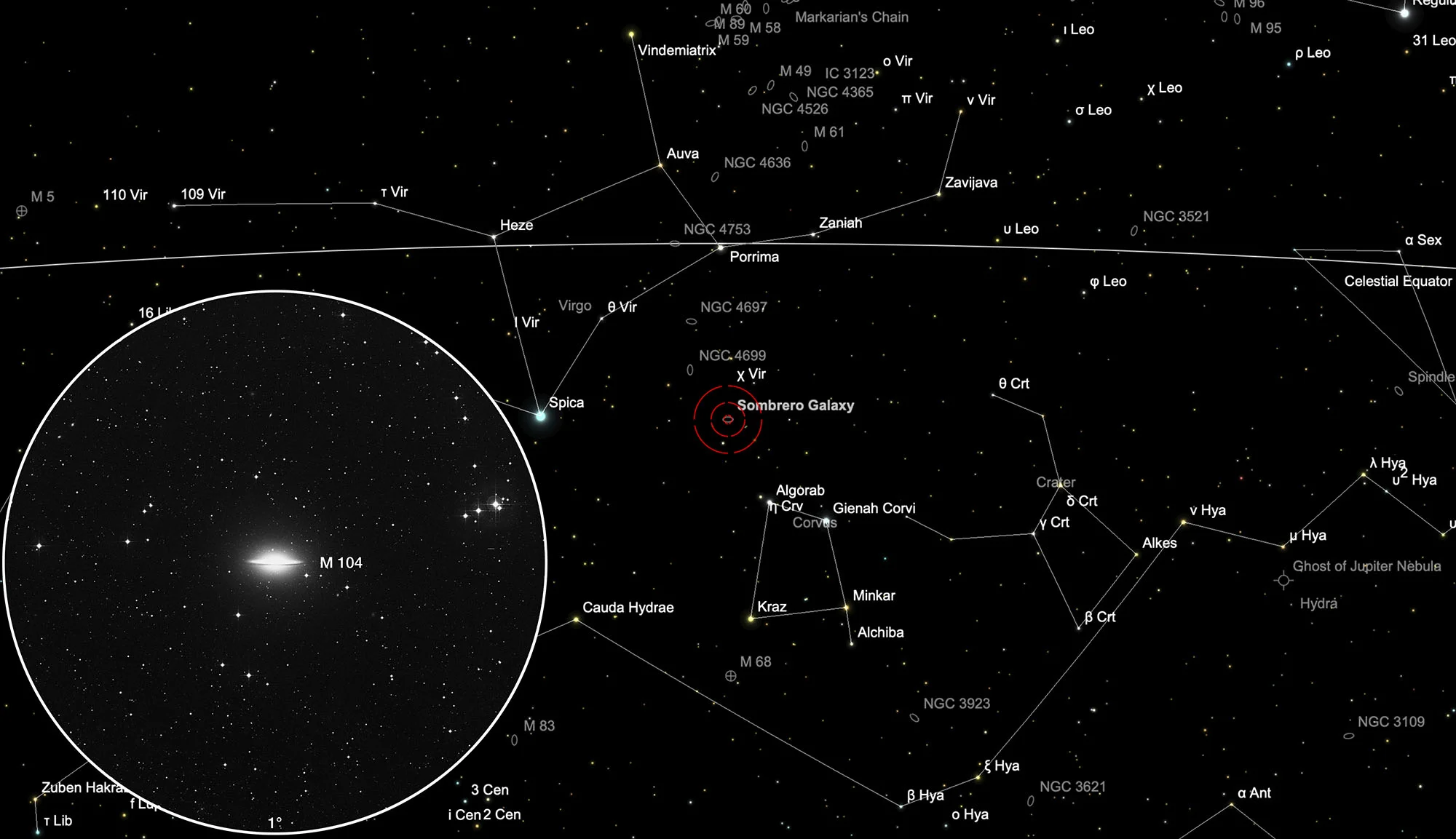Sombrero Galaxy (Messier 104)

History
The galaxy M 104 was discovered by Pierre Méchain on 11 May 1781. It was not originally included in Messier's catalog. In his personal copy of the «Connoissance des Temps» published in 1784, Messier added the discovery of Méchain and described it as «a very faint nebula». It was not until 1921 that Camille Flammarion discovered Messier's notes, identified them as NGC 4594 and added it to the Messier catalog as M 104.
Physical Properties
M 104 was nicknamed the «Sombrero Galaxy» because of the distinctive dust ring in which new stars emerge. We see the galaxy at an angle of about 6 degrees. The galaxy is of the SA(s)a type and has an active core of the LINER type, in which a supermassive black hole of one billion solar masses is suspected. The high number of globular clusters is also remarkable. Around 2000 of these are estimated to belong to the galaxy. Their age is estimated to be 10 to 13 billion years. Heliocentric speeds measured in the last 20 years are in the range from 1087 km/s to 1095 km/s and distances determined with different methods range from 8.9 Mpc to 21 Mpc. [145, 215]
| Designation | NGC 4594 |
| Type | Gx (Sa) |
| Right Ascension (J2000.0) | 12h 39m 59.3s |
| Declination (J2000.0) | -11° 37' 21" |
| Diameter | 8.6 × 4.2 arcmin |
| Photographic (blue) magnitude | 9.0 mag |
| Visual magnitude | 8.0 mag |
| Surface brightness | 11.6 mag·arcmin-2 |
| Position Angle | 89° |
| Redshift (z) | 0.003416 |
| Distance derived from z | 14.43 Mpc |
| Metric Distance | 10.390 Mpc |
| Dreyer Description | !, vB, vL, eE 92°, vsmbMN |
| Identification, Remarks | WH I 43; h 1376; GC 3132; M 104; MCG -2-32-20; UGCA 293; IRAS 12373-1120; Sombrero galaxy |
Finder Chart
Below the constellation Virgo on the border with the constellation Corvus is the Sombrero galaxy. The galaxy with the number 104 in the Messier catalog is located in an area sparsely populated with bright stars. With its brightness of 9.2 mag, it is still easy to find. [192]
Visual Observation
The sombrero galaxy is clearly visible even in binoculars. The elongated galaxy has a strong spindle shape, which can be seen in small to medium-sized telescopes. The black, slightly decentralized congestion belt can be easily made out with medium-sized telescopes. M104 is one of the most worthwhile objects among the spindle-shaped dust-banded galaxies. [192]

762 mm aperture: The visual impression can be reproduced with a MallinCam video camera and an integration time of around three seconds. A tracking 30" f/3.3 SlipStream Dobsonian was used. The resulting image comes very close to visual vision with a 13 mm Tele Vue Ethos eyepiece.
